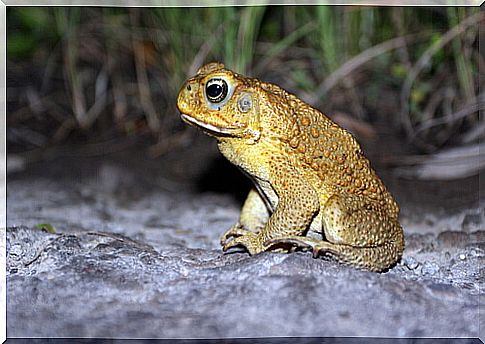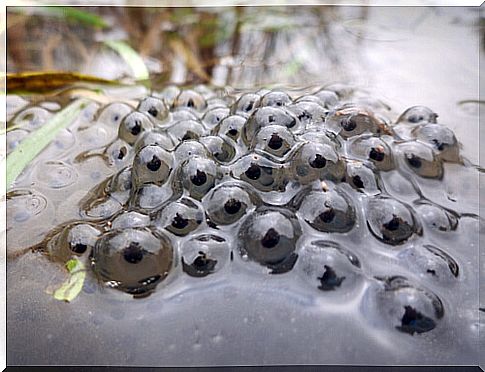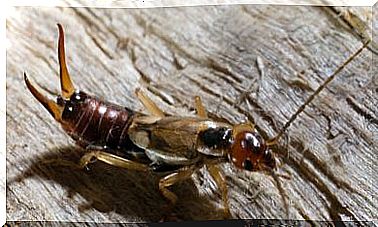Curiosities Of The Marine Toad

The marine toad, known among the scientific community as Rhinella marina, is an anuran amphibian belonging to the buffoon family. Its large size and toxicity are not the only defining features.
Morphological characteristics of the marine toad
This amphibian stands out for its large dimensions, as it can exceed 15 centimeters. For this reason, it is also often referred to as a giant neotropical toad. Its skin is dry and warty, with a series of bumps on the front of its head. Regarding its tonality, it ranges from more brownish specimens to those that have reddish or olive colors with a variable pattern of spots. In general, your belly is always lighter.
After reaching maturity, the marine toad is characterized by large parathyroid glands arranged from the anterior face of the eardrum to the middle of the back, which implies the least toxicity of the juveniles. Like other nocturnal species, its pupils are distinguished by being horizontal and golden.

Reproduction, feeding and behavior
When it comes to reproducing, the males are arranged temporarily or permanently in the vicinity of the springs, to try to capture the attention of the females. To do this, they emit sound vibrations for long periods of time.
The copulation, known as amplexus , occurs when the male surrounds the female below his forelimbs, at which point the female proceeds to lay unfertilized eggs, waiting for the male sperm to do so. The end of the reproductive act culminates in the water.
The eggs, which only have the protection of a mucous cover, are deposited through gelatinous filaments in areas with nearby vegetation. These clutches can exceed 30,000 eggs and their hatching will depend on the water temperature, which can take up to a maximum of a week. Subsequently, the development of the tadpoles will fluctuate between 12 and 60 days.

The marine toad usually feeds at night, in dense vegetation areas with a multitude of insects: ants, bed bugs, beetles and earwigs are its main prey. However , unlike other anurans, they are characterized by being opportunistic predators that can find their food source in vegetables, carrion and other wastes.
In the captures, in addition to the fundamental role that sight plays in identifying prey by their movements, this amphibian relies on its developed olfactory sense. For their locomotion, they are characterized by their short and rapid jumps and, in periods of extreme drought or low temperature, they remain inactive and spend most of their time underground.
In threatening situations, your parathyroid glands produce a viscous, whitish alkaloid substance known as bufotoxin . This substance is characterized by being cardioactive, which can cause spasms, vomiting, respiratory problems, paralysis in the extremities and even death in the case of small individuals.
Habitat and conservation status
The original distribution of the marine toad extends from the southern Rio Grande Valley of Texas to the central Amazon and eastern Peru. Later, it was introduced to the Caribbean islands, southern Florida, Hawaii, and the east coast of Australia.
The development and impact of this amphibian on the local flora and fauna of non-endemic places has led to its being considered one of the 100 most harmful invasive species worldwide.
Currently, the International Union for Conservation of Nature (IUCN) establishes through the so-called Red List of threatened species that the conservation status of the marine toad is of ‘little concern’.









